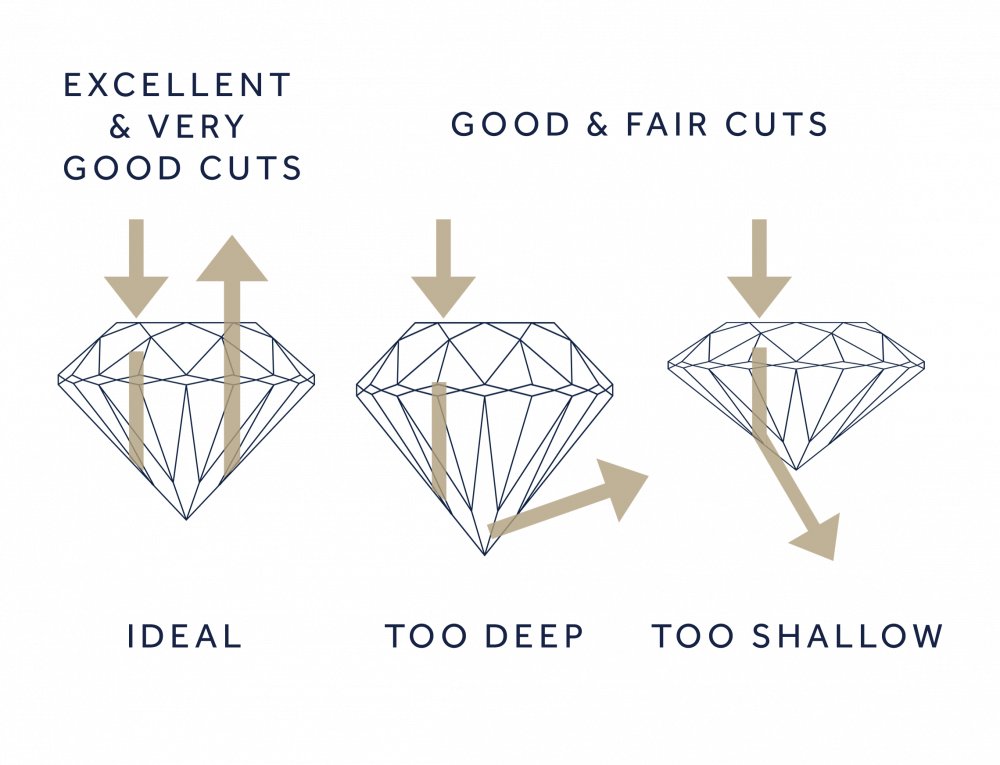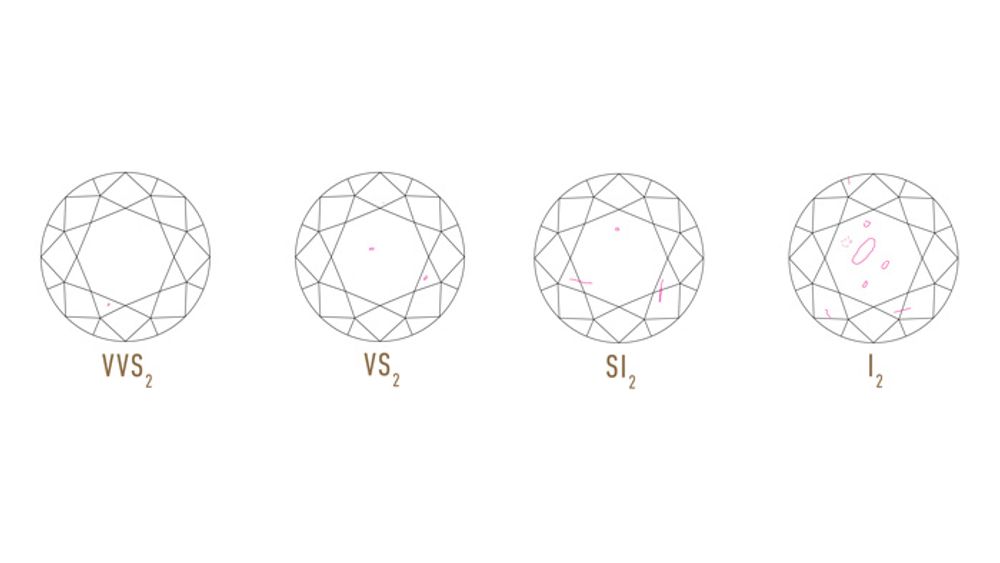Language and currency settings
Change your language and currency settings by selecting your preferences below
Select currency
Select language
How Do You Determine the Value of a Diamond?
No diamond is identical, but how do you know the diamond is of the highest quality possible? Here’s the Nangi diamond guide!

Diamonds come in various sizes, shapes and polishes, but they also vary tremendously in quality and value.
To make sure your diamond bling is of the excellent quality you seek, it’s important to be aware of the differences and what to look for.
There are four main factors you should consider.

The four C’s
The four factors are called the four C’s and stand for: Cut, color, clarity and carat.
1. Cut
How a diamond is cut is crucial to its brilliance. All diamonds are cut in several facets according to a mathematical formula, creating the unique shape.
The cut has a tremendous impact on how and how much light is reflected in the gemstone, giving it its brilliance.
The finer the cut, the brighter the stone.

A Guide To Gemstone Cuts & Shapes
All Nangi diamonds are lab-grown, learn why here.
2. Color
When talking about color in diamonds, it’s mostly about the lack of yellow color.
Almost all diamonds, due to extremely tiny nitrogen particles, have glimpses of yellow hue in them.
The most valuable diamond should be completely clear and white, not showing any sign of color.
Internationally, diamond color is ranked between D-H for absolute best quality. In Norway, the equivalent ranking for best quality is River, Top Wesselton, and Wesselton for the whitest of diamonds.
Most of Nangi's lab-grown diamonds are in River color quality. Check them out here.

D + E = River = finest white
F + G = Top Wesselton = fine white
H = Wesselton = white
I = Top Crystal = slightly tinted white +
J = Crystal = slightly tinted white
K = Top Cape = tinted white
L = Top Cape = tinted white
M = Cape = tinted color
N = Low Cape = tinted color
O = Very Light Yellow = tinted color
P-Z = Light Yellow = tinted color
3. Clarity
Clarity has to do with the degree of inclusions or flaws in a stone. All gemstones naturally have some inclusions or irregularities, both internally and externally.
- FL (Flawless) is the absolute highest quality in clarity, and means there are no flaws. These are extremely rare diamonds.
- IF (Internally Flawless) is the second best ranking. Then there’s VVS1-VVS2 (Very, Very Small Inclusions), which is how Nangi diamonds are ranked.
- Then there’s VS1-VS2 (Very Small Inclusions), and SI1-SI3 (Small Inclusions) down to P1/I1-P3/I3 (Piqué), meaning there are visible irregularities.

Higher clarity in a diamond adds to its value. It is, however, not easy to spot the type of clarity a diamond has, and therefore the cut and color should be of even more importance when choosing your diamond.
Did you know that Nangi’s lab-grown diamonds are sustainable and conflict-free?

4. Carat
Carat is the measurement for a diamond's weight. It basically tells you how big the bling is. The higher the carat, the larger the stone.
Carat (ct) is the globally recognized standard for the weight of a gemstone, and one carat weighs only 0.20 grams.
Make sure you don’t mix carat up with karat, which determines the purity of gold.
Read more on the difference between carat and karat.

But wait, what about sustainability?
There's another, quite crucial factor to consider when shopping diamonds besides cut, color, clarity and carat. You should also think about where the diamond comes from.
We want all our customers to take a conscious choice. That's why we only offer lab-grown diamonds.
Not only are lab-grown diamonds conflict-free, meaning you always know with 100% certainty where they come from, they are also less polluting and damaging to the environment than diamonds from mining.
Read more on why we only offer lab-grown diamonds as the first jeweler in Norway.
Shop our exquisite lab-grown diamond rings here.

Join the Nangi family!
Read similar posts






Join the Nangi family!
Subscribe to our newsletter to be the first to know when we release new one-of-a-kind pieces, and gain exclusive access to secret sales and events
Norsk side
Nangi Fine Jewelry © 2024